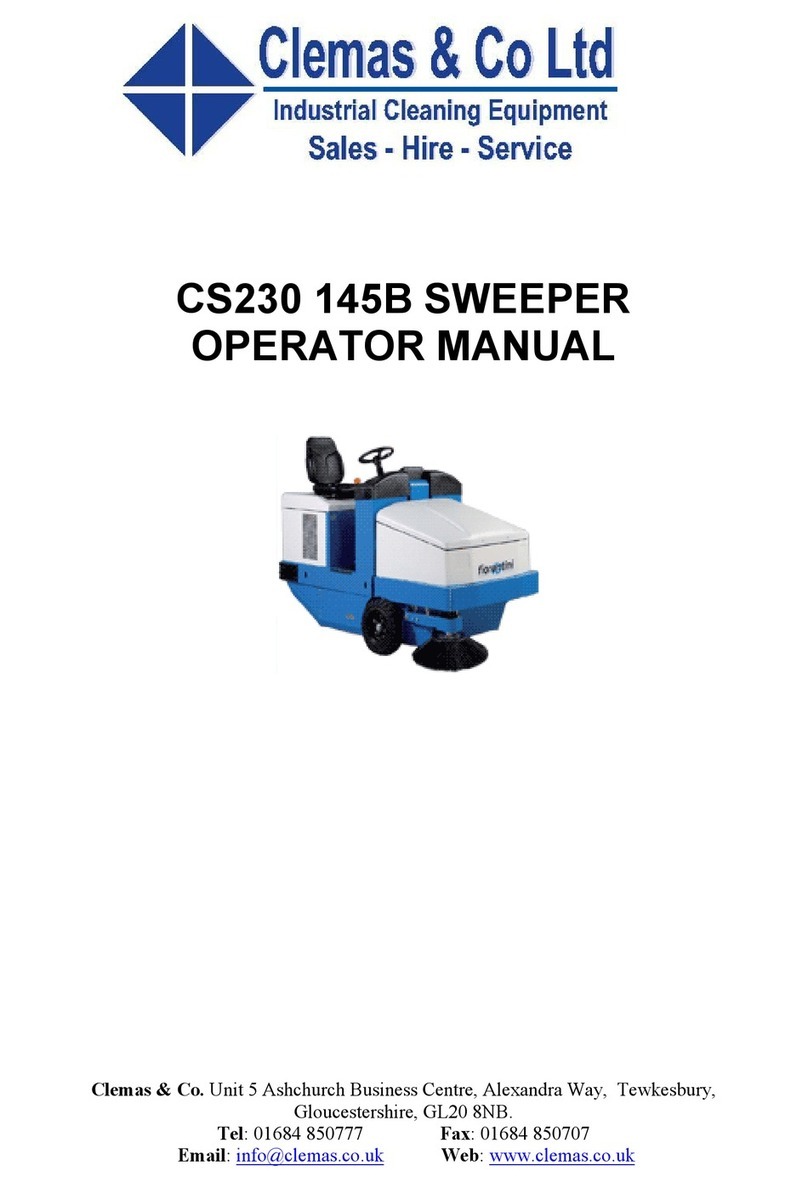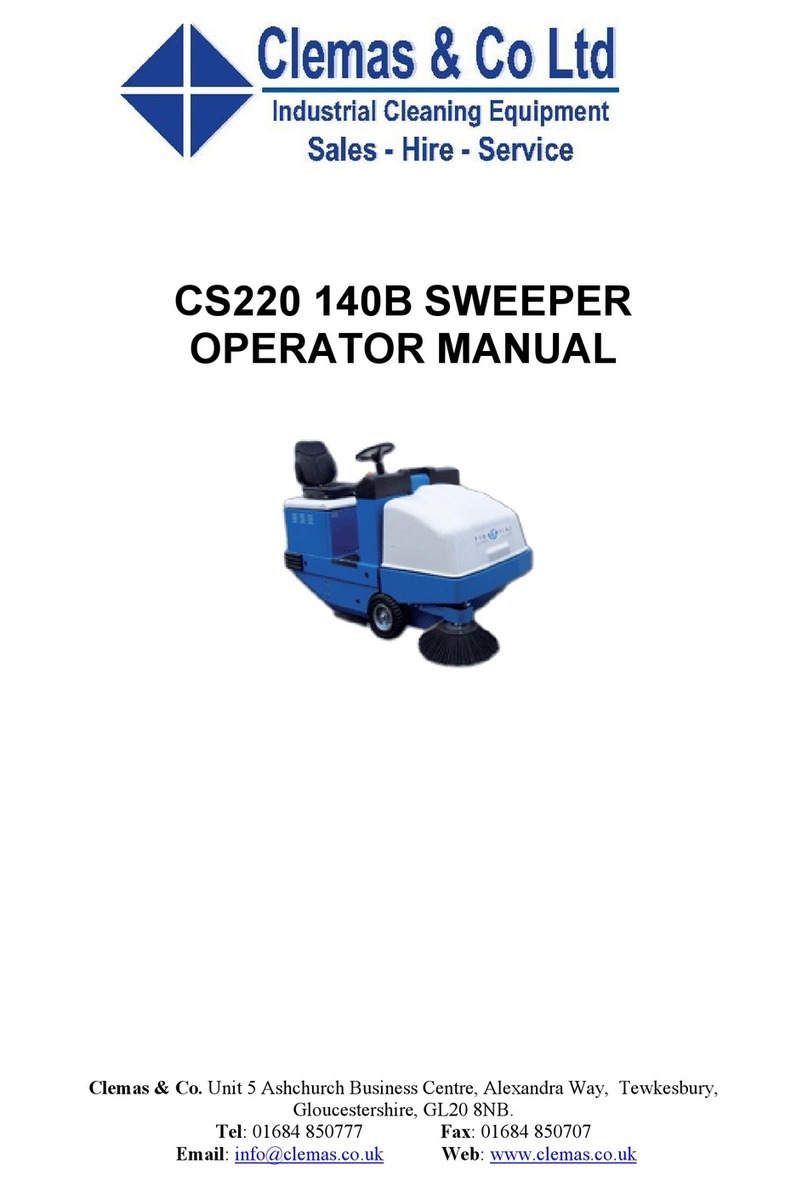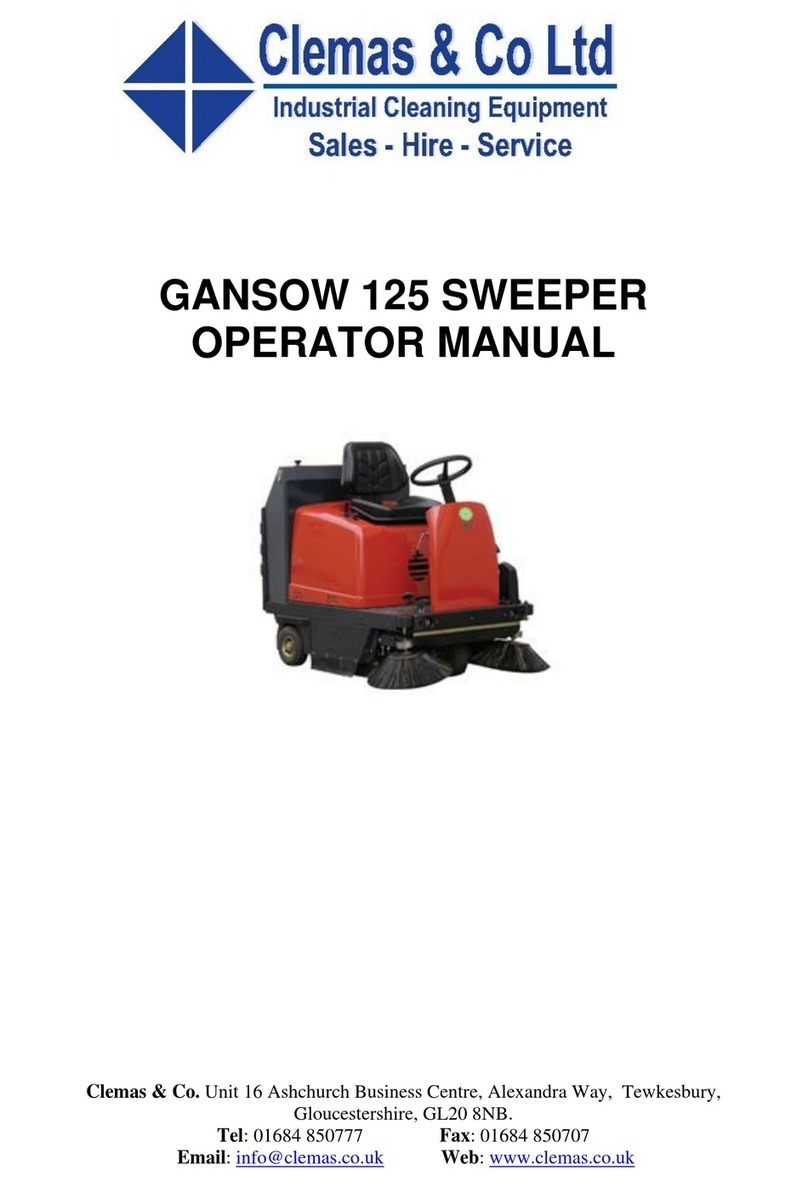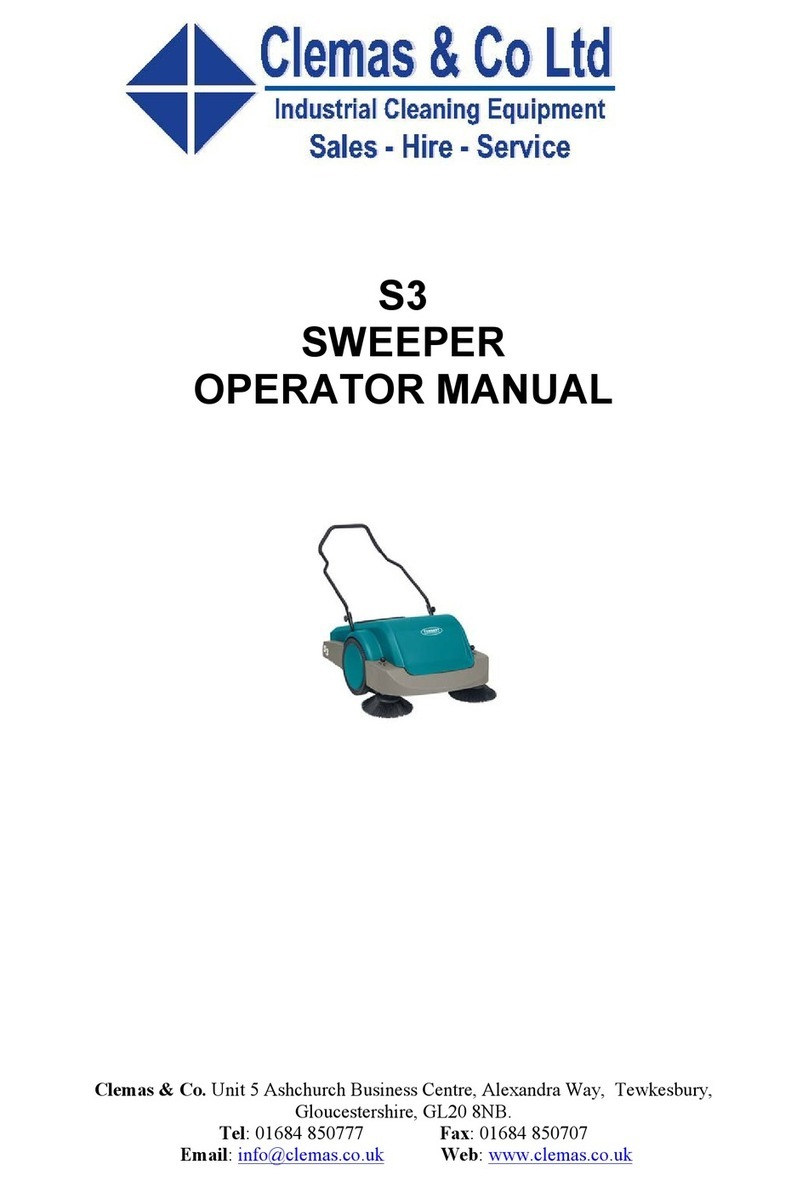IMPORTANT
Rigorously respect all instructions in the Manual (in particular those relating to
danger and important information) and on the safety plates fitted to the machine.
The Manufacturer declines all liability for damage to people or things resulting from
failure to observe the instructions.
The appliance must be used exclusively by persons trained in its use and/or who have
demonstrated their ability and have been expressly instructed to use the appliance.
The machine must not be used by minors.
The machine must not be used for purposes other than those for which it was expressly
designed. Scrupulously respect all safety standards and conditions applicable to the type
of building in which the machine is to be operated (eg: pharmaceutical companies,
hospitals, chemicals, etc).
Do not use the machine in places with inadequate lighting or explosive atmospheres, on
public roads, in the presence of dirt hazardous to health (dust, gas, etc) and in unsuitable
environments.
The machine is designed for temperatures of between +4°C and +40°C when in use and
between +0°C and +50°C when not in use.
The machine is designed to work in a humidity of between 30% and 95%.
Never pick up flammable liquids or explosives (eg. petrol, fuel oil, etc), acids and solvents
(eg. paint solvents, acetone etc.). Never pick up flaming or incandescent objects.
Never use the machine on slopes or ramps of more than 18%. In the case of slight
slopes, do not use the machine transversally, always manoeuvre with care and do not
reverse. When transporting the machine on steeper ramps or slopes, take the utmost
care to avoid tipping up and/or uncontrolled acceleration.
Never park the machine on a slope.
The machine must never be left unattended with the engine or motor on. Before leaving it,
turn the engine or motor off, make sure it cannot move accidentally.
Always pay attention to other people, children in particular, present in the place where you
are working.
Never use the machine to transport people or things or to tow things. Do not tow the
machine.
Never rest objects of any weight on the machine for any reason.
Never obstruct ventilation and heat dispersion slits.
Never remove, modify or circumvent safety devices.
Numerous unpleasant experiences have shown that a wide range of personal objects
may cause serious accidents. Before beginning work, remove jewellery, watches, ties,
etc.
The operator must always use personal protection devices - protective apron or overalls,
non-slip waterproof shoes, rubber gloves, protective goggles and ear protectors and mask
to protect the respiratory tract.
Keep the hands away from moving parts.
In the case of malfunction and/or faulty operation, turn the machine off immediately and
do not tamper. Contact a service centre authorised by the Manufacturer.
All maintenance operations must be performed in an adequately lit place.
All work on the electrical system and all maintenance and repair operations other than
those explicitly described in this manual must be performed by specialised personnel
expert in the sector only.
Only original accessories and spare parts supplied by the Manufacturer may be used in
order to guarantee safe problem-free operation of the machine. Never use parts removed
from other machines or from other kits.
This machine has been designed and constructed to provide ten years' service from the
fabrication date shown on the rating plate. After this time, whether the machine has been
used or not, it should be disposed of according to current legislation in the country in
which it is used:




































